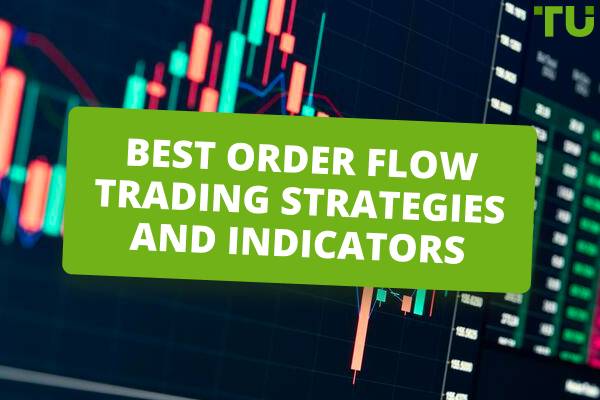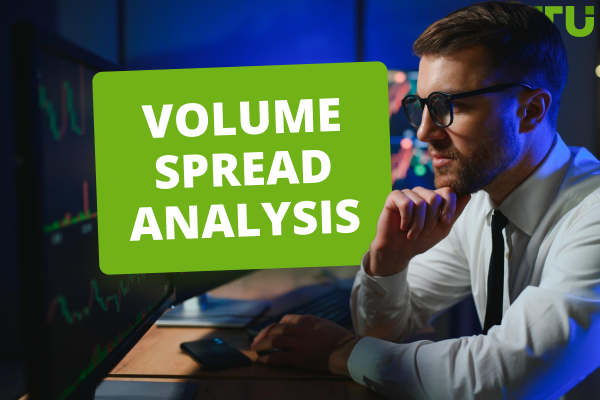How to Identify Bearish (and Bullish) Pennant Pattern
Both bearish and bullish pennant patterns indicate a significant price action on the cards. In simple terms, bearish pennants indicate a price drop in the market while bullish pennants indicate an impending continuation of a strong upward price move.
Bearish pennant is a technical pattern that indicates an imminent continuation of a downward price movement in the market. It is the opposite of bullish pennant, whereby instead of consolidating after a move up, the market pauses on a significant move down. When technical traders spot a bearish pennant flag, they take it as a signal that price moving downward is continuing once the market breaks below the support line. Bearish pennants can occur over any time frame.
A promising sign of forming a bearish pennant is falling volume, and then the volume rapidly builds up once the market breaks out.
On the other hand, a bullish pennant is a trading pattern that suggests that a solid upward move in price will continue. When a market moves considerably high, pauses, and then consolidates between converging resistant and support lines, the result is this pennant.
It indicates significant upward price action early, making it a sought-after pennant pattern. Bullish pennant patterns occur over several time frames. Long-term traders look for them on weekly or monthly charts, while day traders identify them on minute or second charts.
Bullish pennants have two elements used to identify them: a strong upward movement at the start, referred to as a “pole”. The second is a symmetrical triangle with resistance and support lines that forms after a price consolidation.
The buyers who pushed up the market might retreat and take their profits, while bears believe there’s a possibility for a retracement. The price will consolidate when there is parity between demand and supply, though it will not last long.
Start trading Forex right now with RoboForex!What is the Bearish Pennant?
A bearish pennant marks a pause on a price movement halfway down a downward solid market trend. This gives traders a chance to make a short trade, hopefully, profit from a second significant fall in the price. The importance of the bearish pennant pattern is the trend it is formed, which is used by traders to determine whether to invest or back off. Below is an example of a bearish pattern of an asset
How to Identify Bearish Pennant
When identifying a bearish pennant pattern, always look for the consolidation between the resistance and support after a significant bearish price move. A roughly symmetrical triangle is formed by resistance and support lines hinting that the market is conflicted between negative and positive sentiment.
The main components of the pattern are:
-
A flagpole-a steep drop in price, followed by a pause in a downward movement, which is shown by the red candlesticks
-
A pennant- a triangular-shaped pattern formed after the break shown by small green and red candlesticks
After the two processes occur, a breakout happens, and the downward movement continues, and they are determined by clearly expressed local levels of support and resistance. When a bearish pennant is about to be formed, relatively long candles are created during the downtrend. These long candles are what form the flagpole. A pause happens where the price goes into a small correction or flat where the candles are small.
This candlestick pattern usually forms after an uptrend and a signal of a resistance point. The candles in a bearish pattern show their strength in a market. A long red body followed by three small green bodies and another red body forms this pattern. All green candles are contained within the range of bearish bodies and show that bullish traders do not have the strength to reverse the design or trend.
How to Trade Bearish Pennant Pattern
To trade on the pennant, you have to understand the signal of the pattern. Bearish signals are seen when the price shows higher highs, but the RSI shows lower highs. This will help you to know the moment to open a deal, where and by what principle to set a stop loss.
You wait for the market to break upward from the trend line to start trading. Secondly, use the general rule that markets typically revert shortly before the onset of a full breakout. What happens is resistance turns into support, and support turns into resistance.
To recognize the pattern, you need to follow these three steps:
-
1
First spot the price of an asset drop sharply on a chart
-
2
See the movements that follow
-
3
Connect the lower and upper swings
To trade using bearish pennant pattern,it has 3 steps.
Step one
Enter your trade- this is done as soon as candlestick has closed below the pennants
Step two
Place your stop loss.
place it on the other side of the pennant just above the trend line
Step three
Place your profit target.
measure the height of the pole before the market starts to consolidate.place your profit target to be the same as distance below the pennants breakout point. This is illustrated by the chart below.
In simple terms, if you set a stop-loss order to be 10% below the price in which you purchased the security, your loss will be limited to 10%. For example, if you buy company stocks at $25 and you want to keep a stop-loss order of 10%, you will set a stop-loss order at $22.50. But your shares will be sold at the current price if the stock drops below $22.50
If a triangle is formed, then it is a bearish pennant pattern. When playing the market, you should note that it is essential to set a floor for your position for security. Placing a stop-loss order too far away can result in big losses if the market moves in an opposite direction. You should always set a stop loss too close for you to get out of a position quickly.
What is the Bullish Pennant?
It is the exact opposite of a bearish pennant. A continued pattern marks a pause in the movement of price halfway through a solid upward trend, allowing traders to go long and earn profit from the price rise. It is formed when a strong vertical price movement in a market before the pattern is formed. The consolidation is roughly equal as support and resistance lines point down and converge, forming a triangle. This hints that the initial upward trend in price is about to resume.
Below is a bullish illustration pennant where the green candlesticks signal the upward price movement and the symmetrical triangle formed by the support and resistance lines. The essence of the signal is to help you place your trade, place your stop-loss order and set your profit target.
How to Trade Bullish Pennant?
The first step in trading on a bullish pennant is;
Enter your trade as soon as candlestick has closed above the upper trend line, and you enter your long trade
Secondly, place your stop-loss. Similarly to the bearish pennant, set your stop loss order on the other side of the pennant, just below the lower trend line
Third, place your profit target. Measure initial rise in price using the pennant pole before the market started to consolidate. It would be best if you set your profit target to be the same distance above the breakout point of the pennant. I.e., if the initial price was 60 pips in size, then place your target profit 60 pips above your trade entry.
Best Brokers to Consider
When choosing a trading broker, you should consider how they operate. There are two types of brokers: Regular brokers who deal directly with their clients and broker-resellers who act as middlemen between a prominent broker and the clients. Generally, regular brokers are highly regarded than broker-resellers. The criteria for choosing brokers is mainly affected by some factors such as
presents of charting tool in their services,
the quality of reviews it has from its users,
whether it is a regulated broker,
do they give a signal on the market trend and lastly
their customer service
Let’s consider these two brokers
OANDA
OANDA is one of the leading regulated brokers of trading using bearish and bullish pennant patterns. It is one of the top private broker companies in the US hence not listed on the stock exchange .it has an overall rating of 4.6. It has a large number of benefits such as:
Trading fees are generally low, and they also have a fee on the inactivity of your account, which stands at 10 units of the currency you are trading.
Account opening is straightforward and has no minimum deposit requirement. Also, it is fully digital, and you can open it from any part of the globe.
It charges no deposit fees and account fees. Withdrawing money directly to your debit cost no fee but bank transfers are expensive.
You can use bank transfers, credit/debit, and E-wallets to deposit or withdraw money.
At OANDA, You can choose from among 9 base currencies, which compares well with the company's competitors.
It has a two-step login to enhance the security of their users
It has excellent multilingual customer care for its customers.
However, to trade on this platform has some conditions:
You must be 18 years to access and change on their platform.
You should fund your account using their available method
Open a live trading account for you to trade on real money
Follow their laid down rules from the platform
OANDA web version offers signals while this service is not available on the mobile version.
IG
IG is an excellent broker ranking at the top in all key categories that are of much importance to traders. IG Markets is a limited company regulated and authorized by the Financial Conduct Authority in the UK.
Here are some benefits of using the platform:
You can trade on advanced web platforms and award-winning mobile apps.
Access more than 17000 global financial market
It has unique risk management tools and services to use at your disposal.
Trade out any time of the day anywhere
Your fund is protected under client money and asset rules
Excellent customer services
And multiple ways to trade for their clients.
IG offers their clients a chance to build their trading skills and knowledge by providing webinars, offering a wide range of online courses and seminars from their academy. Their clients can also ask questions other like-minded traders and their support in their online trading discussion forum-IG Community. On the other hand, to use this platform, you must:
Be 18 years and above
Open live trading account
It is not suitable for beginners
Know it has no guaranteed stop losses for us citizens
Summary
In conclusion, a pennant is used by traders to know an impeding downward move of price. Any trader must understand the candlesticks and how they behave whenever a bearish or bullish pennant is formed. It helps traders buy or sell assets, set a profit target and profit-loss order, and withdraw from a trade. Also, you should understand charts well for you to know the type of pattern formed when a price moves. This will help you make a crucial decision on the trade based on the information at hand through technical analysis.
When choosing the time of broker for you to trade, choose one that offers detailed charts and support to their clients and as many benefits. The choice of the type of broker will largely depend on the availability and their nature, i.e., regular and broker-resellers. Going for a broker with a good review and rating on the market is essential for any trader.
FAQs
How do bullish and bearish patterns occur?
A bullish pattern occurs when there is a sharp increase in price on the market, pauses, consolidates, and converges between support and resistant lines before resuming its ascend, while in a bearish pennant pattern, the price consolidates after a significant downward move before beginning its downward descend.
What is a pennant?
Pennants are technical patterns used in identifying continued sharp price moves.
Are both bullish and bearish pennants the same?
No, both show different price moves where bullish show an upward trend while bearish shows a downward trend.
What is a candlestick?
It is price movement shown on a candlestick chart graphically that is believed to predict a particular market movement.
Glossary for novice traders
-
1
Cryptocurrency
Cryptocurrency is a type of digital or virtual currency that relies on cryptography for security. Unlike traditional currencies issued by governments (fiat currencies), cryptocurrencies operate on decentralized networks, typically based on blockchain technology.
-
2
Brokerage fee
A brokerage fee, also known as a commission, is a fee charged by a brokerage or financial institution for facilitating and executing financial transactions on behalf of clients. Brokerage fees are typically associated with services related to buying or selling assets such as stocks, bonds, commodities, or mutual funds.
-
3
Day trading
Day trading involves buying and selling financial assets within the same trading day, with the goal of profiting from short-term price fluctuations, and positions are typically not held overnight.
-
4
Investor
An investor is an individual, who invests money in an asset with the expectation that its value would appreciate in the future. The asset can be anything, including a bond, debenture, mutual fund, equity, gold, silver, exchange-traded funds (ETFs), and real-estate property.
-
5
Short selling
Short selling in trading involves selling an asset the trader doesn't own, anticipating its price will decrease, allowing them to repurchase it at a lower price to profit from the difference.
Team that worked on the article
Chinmay Soni is a financial analyst with more than 5 years of experience in working with stocks, Forex, derivatives, and other assets. As a founder of a boutique research firm and an active researcher, he covers various industries and fields, providing insights backed by statistical data. He is also an educator in the field of finance and technology.
As an author for Traders Union, he contributes his deep analytical insights on various topics, taking into account various aspects.
Dr. BJ Johnson is a PhD in English Language and an editor with over 15 years of experience. He earned his degree in English Language in the U.S and the UK. In 2020, Dr. Johnson joined the Traders Union team. Since then, he has created over 100 exclusive articles and edited over 300 articles of other authors.
Mirjan Hipolito is a journalist and news editor at Traders Union. She is an expert crypto writer with five years of experience in the financial markets. Her specialties are daily market news, price predictions, and Initial Coin Offerings (ICO).













